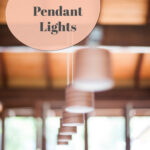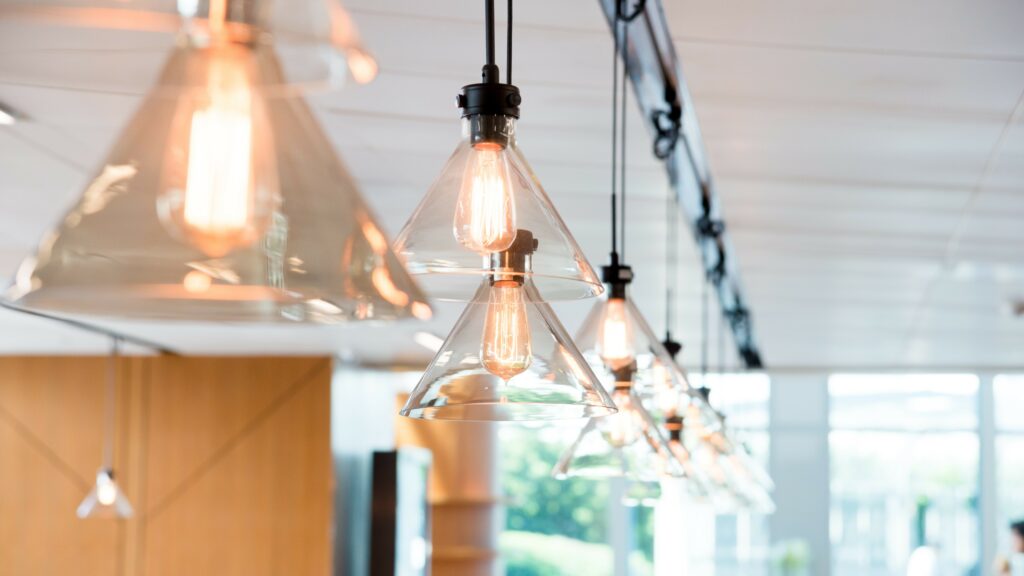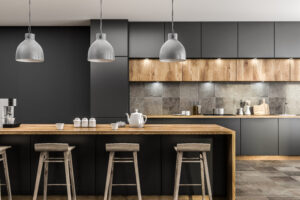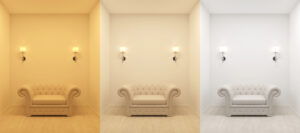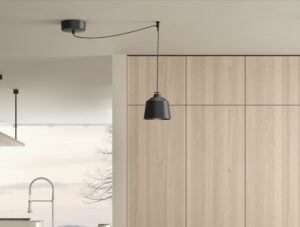A Guide to Pendant Lights
There are many reasons why hanging pendants have always been a popular lighting choice. Versatile, multi-functional and available in an unlimited range of appealing styles, shapes and sizes, pendants can be used to brighten up a dark space in a room or be the decorative focal point of a foyer, hallway or bathroom. They can create a mood with a warm glow or serve as a spotlight to focus on a single area. Pendant lights make a fabulous primary lighting source.
Let’s take a closer look at pendant lights so you can discover if they are the right choice for you.
What is a Pendant Light?
Let’s start with the basic definition of a pendant light. It’s a single light fixture that is suspended from the ceiling by a cord, chain or rod. It is both functional and stylish, providing primary and secondary lighting as well as serving as a mood-enhancing decorative accessory. It’s typically used to add a design statement to a room that needs a facelift, or to add functionality by serving as a source of light.
Pendant lights can be hung in a decorative cluster, in a stylized arrangement, or as a single, stand-alone light fixture. As a light source, they can serve different functions:
Task Lighting: Used as a spotlight, a pendant light can illuminate a precise location, such as a drafting table or kitchen counter.
Area Lighting: The pendant can light up a specific part of a room, such as a card table or a reading area near a bookshelf.
General Lighting: A pendant light can be the primary light source for an entire room, especially if it is hung in the center of the ceiling.
How Does a Pendant Light Differ from a Chandelier?
Although both a pendant light and a chandelier are light fixtures that are suspended from the ceiling, there are distinct differences between the two. A chandelier has a central body that is connected with multiple lighting branches that hold many lights, whereas a pendant light is a single fixture that hangs from a central cord or chain.
Chandeliers are often more intricate and fancier than pendants, which often have a modern, minimalistic look. Chandeliers are often the decorative focal point of a room, providing indirect, ambient lighting. Pendant lights can be decorative as well, but more often they serve as a functional light source. While chandeliers are usually constructed from crystal, iron, steel or bronze, pendant lights are typically made from glass, metal, chrome, plastic and even cloth and paper.
What are the Best Places in a Home to Use Pendant Lighting?
One of the advantages of pendant lighting is its versatility. Pendants can be used anywhere in a home, either as single fixtures or in groups. They are particularly popular in kitchens, dining rooms and foyers, but are an equally good choice for bathrooms, hallways, bedrooms and porches.
In the kitchen, they are typically hung over islands and peninsulas, where they can illuminate a surface while preventing people from bumping into them. They are suspended over dining room tables for the same reasons. Used with dimmable LED bulbs, they are ideal for mood-setting.
What is the Ideal Placement for a Pendant Light?
Pendants should be hung high enough so as to not obstruct views or movement. We recommend placing them 28” to 38” above a countertop, and 62” to 72” from the bottom of its shade to the floor. When hanging multiple pendants, they should be placed 24” to 30” apart. An odd number of pendants tends to look better than an even number.
The cord should be at least 4 and 6 feet long if the pendant is hard-wired. This range allows for adjusting how high or low it is hung from the ceiling. If the fixture is a plug-in, the cord will need to be at least 9 feet long and might require an extension cord.
Useful tips:
It’s easy to adjust the height when hanging if your pendant light if it has a chain or cord. If you choose one with a pole or rod, make sure it’s adjustable.
When using a pendant in a bathroom instead of a sconce, hang it near eye level, approximately 18” from the center of the sink, to eliminate shadows.
If you’re hanging two or more pendants over a counter, they should be spaced so that each one’s light stream overlaps with its neighbor so you don’t end up with any dark areas on the counter.
